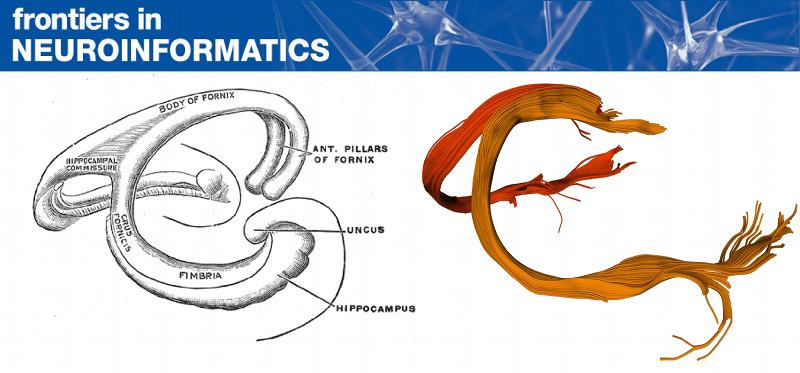Older Highlights¶
DIPY 0.16.0 is now available. New features include:
Horizon, medical visualization interface powered by QuickBundlesX.
New Tractometry tools: Bundle Analysis / Bundle Profiles.
New reconstruction model: IVIM MIX (Variable Projection).
New command line interface: Affine and Diffeomorphic Registration.
New command line interface: Probabilistic, Deterministic and PFT Tracking.
Integration of Cython Guidelines for developers.
Replacement of Nose by Pytest.
Documentation update.
Closed 103 issues and merged 41 pull requests.
DIPY 0.15.0 is now available. New features include:
Updated RecoBundles for automatic anatomical bundle segmentation.
New Reconstruction Model: qtau-dMRI.
New command line interfaces (e.g. dipy_slr).
New continuous integration with AppVeyor CI.
Nibabel Streamlines API now used almost everywhere for better memory management.
Compatibility with Python 3.7.
Many tutorials added or updated (5 New).
Large documentation update.
Moved visualization module to a new library: FURY.
Closed 287 issues and merged 93 pull requests.
DIPY 0.14 is now available. New features include:
RecoBundles: anatomically relevant segmentation of bundles
New super fast clustering algorithm: QuickBundlesX
New tracking algorithm: Particle Filtering Tracking.
New tracking algorithm: Probabilistic Residual Bootstrap Tracking.
Integration of the Streamlines API for reading, saving and processing tractograms.
Fiber ORientation Estimated using Continuous Axially Symmetric Tensors (Forecast).
New command line interfaces.
Deprecated fvtk (old visualization framework).
A range of new visualization improvements.
Large documentation update.
DIPY 0.13.0 is now available. New features include:
Faster local PCA implementation.
Fixed different issues with OpenMP and Windows / OSX.
Replacement of cvxopt by cvxpy.
Replacement of Pytables by h5py.
Updated API to support latest numpy version (1.14).
New user interfaces for visualization.
Large documentation update.
DIPY 0.12.0 is now available. New features include:
IVIM Simultaneous modeling of perfusion and diffusion.
MAPL, tissue microstructure estimation using Laplacian-regularized MAP-MRI.
DKI-based microstructural modelling.
Free water diffusion tensor imaging.
Denoising using Local PCA.
Streamline-based registration (SLR).
Fiber to bundle coherence (FBC) measures.
Bayesian MRF-based tissue classification.
New API for integrated user interfaces.
New hdf5 file (.pam5) for saving reconstruction results.
Interactive slicing of images, ODFs and peaks.
Updated API to support latest numpy versions.
New system for automatically generating command line interfaces.
Faster computation of cross correlation for image registration.
DIPY 0.11.0 is now available. New features include:
New framework for contextual enhancement of ODFs.
Compatibility with numpy (1.11).
Compatibility with VTK 7.0 which supports Python 3.x.
Faster PIESNO for noise estimation.
Reorient gradient directions according to motion correction parameters.
Supporting Python 3.3+ but not 3.2.
Reduced memory usage in DTI.
DSI now can use datasets with multiple b0s.
Fixed different issues with Windows 64bit and Python 3.5.
DIPY 0.10.1 is now available. New features in this release include:
Compatibility with new versions of scipy (0.16) and numpy (1.10).
New cleaner visualization API, including compatibility with VTK 6, and functions to create your own interactive visualizations.
Diffusion Kurtosis Imaging (DKI): Google Summer of Code work by Rafael Henriques.
Mean Apparent Propagator (MAP) MRI for tissue microstructure estimation.
Anisotropic Power Maps from spherical harmonic coefficients.
A new framework for affine registration of images.
DIPY was an official exhibitor for OHBM 2015.
DIPY 0.9.2 is now available for download. Here is a summary of the new features.
Anatomically Constrained Tissue Classifiers for Tracking
Massive speedup of Constrained Spherical Deconvolution (CSD)
Recursive calibration of response function for CSD
New experimental framework for clustering
Improvements and 10X speedup for Quickbundles
Improvements in Linear Fascicle Evaluation (LiFE)
New implementation of Geodesic Anisotropy
New efficient transformation functions for registration
Sparse Fascicle Model supports acquisitions with multiple b-values
DIPY 0.8.0 is now available for download. The new release contains state-of-the-art algorithms for diffusion MRI registration, reconstruction, denoising, statistical evaluation, fiber tracking and validation of tracking.
For more information about DIPY, read the DIPY paper in Frontiers in Neuroinformatics.
So, how similar are your bundles to the real anatomy? Learn how to optimize your analysis as we did to create the fornix of the figure above, by reading the tutorials in our gallery.
In DIPY we care about methods which can solve complex problems efficiently and robustly. QuickBundles is one of the many state-of-the-art algorithms found in DIPY. It can be used to simplify large datasets of streamlines. See our gallery of examples and try QuickBundles with your data. Here is a video of QuickBundles applied on a simple dataset.


